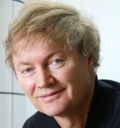
Laboratory of Photonics and Interfaces (LPI) Station 6, Institute of Chemical Science and Engineering, Faculty of Basic Science, Ecole Polytechnique Federale de Lausanne, CH-1015 Lausanne, Switzerland
e-mail: michael.graetzel@epfl.ch
URL: http://lpi.epfl.ch/
